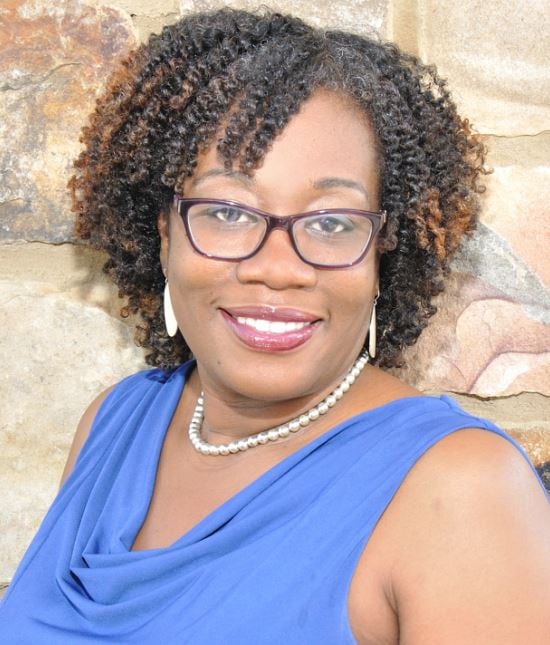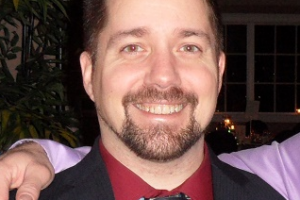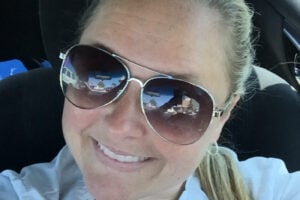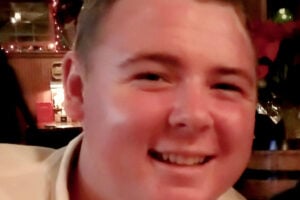As I look back on my blood clot experience, my symptoms started in mid-July, when I had a sharp pain in my right calf. I recall asking my aunt, a former nurse, “How do you know when you have a blood clot?” I dismissed the pain I was experiencing as due to a recent increase in physical exercise. In late July, I began to notice that I was having shortness of breath walking from my car to my office and while exercising. For two weeks, I often joked with my co-workers that I was really out of shape and thought I was developing adult asthma.
On August 6, 2013, I felt a sharp pain in my chest and immediately contacted my doctor, as I thought I was having a heart attack. I was seen in my doctor’s office, where I underwent a chest X-ray, EKG, and a series of blood tests. The chest X-ray and EKG came back normal. My doctor ordered a stress test and sent me home. I was contacted two hours later and instructed to go to the ER to have a CT-scan, because my blood tests showed that I might have had a possible blood clot. I was not alarmed and drove myself to the ER for the procedure.
The CT-scan confirmed that I had bilateral pulmonary emboli (multiple blood clots in both lungs) and I was admitted to the hospital, where I stayed for one week. I had no pain or discomfort, other than the morning’s incident, and I was able to control my breathing by taking deep breaths and not over exerting myself. It was difficult for me to comprehend that I was being admitted to the hospital and placed on total bed rest. It was not until 2 am the next morning, when I finally got into my hospital room, that I realized the seriousness of my condition. The nurses would not let me walk even a mere five steps and informed me that “you are in ICU, being monitored at the nurse’s station as well as the main hospital downtown.” I got it then!
I was started on intravenous heparin and warfarin. During my week in the hospital, I was seen by ER physicians, general medical doctors, an obstetrician, pulmonologist, hematologist, and a host of nurses. I had an echocardiogram, ultrasound of my legs and pelvis, EKG, chest X-ray, and blood work three to four times per day. There was never a consistent explanation of why I developed the blood clots, as the ultrasounds showed no clots in my legs or pelvis. One doctor’s theory was my recent travel to Ohio in June and Washington, DC in July. Another doctor thought that fibroids might have been causing a possible blockage of the vein that carries blood from the lower body to the heart. On the day of my discharge, I learned that I have a blood clotting disorder called Factor V Leiden, which I had never heard of. It’s a gene mutation you inherit from one or both of your parents.
Needless to say, I was very overwhelmed and confused. I was absolutely clueless about my newly diagnosed disorder and taking new medication with intimidating possible risks, like increased bleeding. The confusion continued as the precise cause of my blood clots remained in question. My conclusion is that my PE was a combination of multiple factors, and I am fortunate to be able to share my story, as I now know that my outcome could have been very different.
Before, I was totally unaware of the symptoms of blood clots in the legs or lungs and simply thought they were due to being out of shape, developing adult asthma, over exerting myself, and possible heart attack. My saving grace involved four crucial factors: Awareness of my body, my ignorance because I was too clueless to freak out, my faith because I asked God for peace and comfort during a time of uncertainty, and the support of family and friends.
Lastly, it was thought that I would be on blood thinners for life, however I am happy to report that I have been off the medication for over a year. I am monitored by my hematologist and pulmonologist every four months. At my last pulmonologist visit he shared, “I am very impressed with your progress, you have improved significantly from when we first met two years ago.”
March is Blood Clot Awareness month and I want to bring awareness to this silent killer. According to the American Heart Association, up to two million Americans are affected annually by blood clots. Of those who develop PE, up to 300,000 will die each year. That is, more Americans die from DVT/PE than from breast cancer and AIDS combined, and 74% have little to no awareness.




